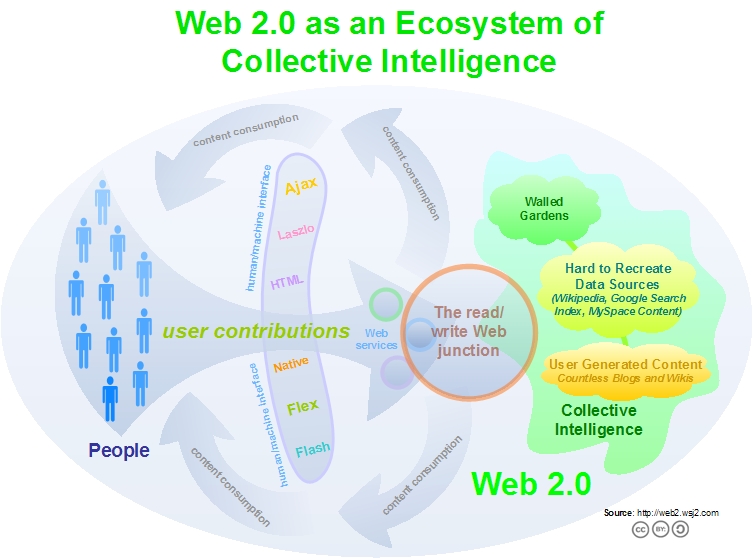Being Practical with Web 2.0 Thinking
May 18, 2006 - Show original item
I wrote earlier this week about the discussions on Web 2.0 reductionism that has been making the rounds recently, and I think it's a refreshing change of pace. As my readers know, I certainly tend to be detail oriented and my posts and diagrams often show it. But I've received such a positive round of comments from this line of thinking, Neil Ward-Dutton included, that I wanted to bring it to your attention.
In fact, I've had a lot of conversations recently with people tracking Web 2.0 and I've found that most of them are really focusing on the basics still. Many companies seem to be sharply limiting their initial Web 2.0 efforts and focusing on specific aspects of Web 2.0, such as RIAs and Ajax or an enterprise-class wiki. And while I'm the last person to suggest that 'boiling the ocean' and taking Web 2.0 concepts on wholesale is a viable strategy, I do agree with Gartner's pronouncement this week that doing so really can sharply limit the return on investment. It's not that you have to go whole hog and implement every bell and whistle in the Web 2.0 practice set. Quite the contrary.

But successfully encouraging valuable user generated content and building good architectures of participation are brand new fields of endeavor for many organizations. However, that's not to say that IT systems haven't been doing this for years. For example, one group I recently spoke with discussed the infamous end-user "notes" column in their enterprise applications where they can enter free form text about a given transaction. These notes are often distributed amongst dozens of applications, yet most people working with a customer or account needs to see all the notes together to get critical context for whatever they are doing. Defragmenting user generated content and breaking down barriers between IT stovepipes and isolated systems (walled gardens) is critical to get a holistic positioning of your IT systems.
The low impedance between systems in a Web 2.0 world almost discourages walled gardens because they use the fundamentally open protocols and architectures of the Web (sometimes called Web-Oriented Architecture). But building a WOA is not really the hard part, though it's not a piece of cake either. It's tearing down the traditional control structures around content and information inside the enterprise. This is something the Web has a lot less of and is much happier because of it. That's not to say that enterprises need to throw their management and control structures away. But they could sure loosen them up a bit in the right places. And achieving balance here is something that the successful companies will do, through trial and error.
Social computing is the fallout of rampant Web 2.0 technologies and matching skills (the enterprise users of tomorrow are spending much of their time on iTunes and MySpace today.) What will happen as we make practical use of Web 2.0 in the enterprise will be fascinating to watch indeed.
Important Note: I'm actively looking for fresh, exciting articles for AjaxWorld Magazine and the Web 2.0 Journal. Please send me your article concepts in a paragraph or less and I'll get back to you ASAP.























 1021
1021











 被折叠的 条评论
为什么被折叠?
被折叠的 条评论
为什么被折叠?








